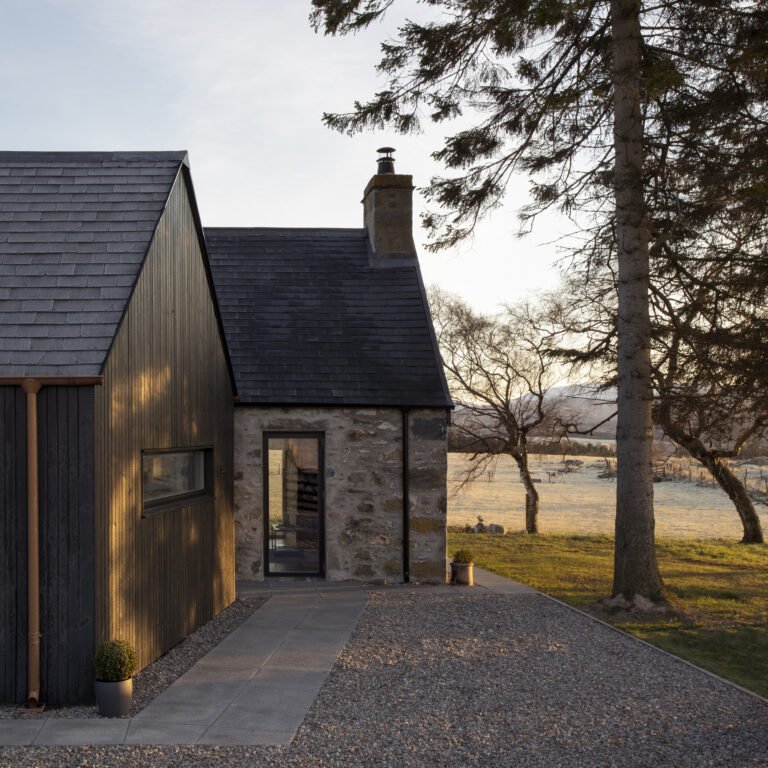A new exhibition showcases the remarkable paintings of OMA co-founder Zoe Zenghelis
From Alsop to Bernini, Le Corbusier, and on to Zaha, there are plenty of architects who have also painted. But the painter who works in architecture is a rarer breed. Now an eminent example is receiving her due in the Carnegie Museum of Art’s Zoe Zenghelis: Fields, Fragments, Fictions, an exhibition that runs through July 24 at the Heinz Architectural Center in Pittsburgh.
Zenghelis, born in Athens, Greece, in 1937, is best known as a cofounder of the Office for Metropolitan Architecture (OMA) along with her then husband, Elia Zenghelis, and another painter-architect couple, Madelon Vriesendorp and her then partner Rem Koolhaas. OMA’s history often results in the double occlusion of female talent, as both Zoe and Vriesendorp are at times overshadowed by Elia and Koolhaas—and the last often eclipses the prior three, to the point of factual error: Zoe’s paintings at times appear credited solely to OMA or to Koolhaas. Aiming to right this wrong, Fields, Fragments, Fictions highlights her considerable body of work, which has remained decidedly, if impressionistically, architectural throughout her life.
The range and assortment of material on view in Pittsburgh is bracing and delightful, as it features numerous paintings, sketches, letters, and more, paired with Zenghelis’s selection of works from the museum’s permanent collection. The exhibition follows and builds upon Do you remember how perfect everything was?, staged at the Architectural Association (AA) in London last year and curated by Hamed Khosravi, an educator at the AA. The Carnegie’s show is cocurated by Khosravi and Theodossis Issaias, associate curator at the Heinz Architectural Center, and, most importantly, was assembled with Zenghelis’s active participation.

The show emphasizes that Zenghelis was not an architect; these pieces were not a distraction from the architect’s charge to build, but a prompt from another field— that of art. Seen through an architectural lens, her work encourages possibilities.
Zenghelis’s early work for OMA, produced for competition entries and proposals, restores the value of “paper architecture.” As a foursome, OMA was not merely conceptual like Archigram or Lebbeus Woods; eventually they built things that resembled their dreams. The quality of OMA’s imagery—much of which Zenghelis produced—was central to its oeuvre. Koolhaas knew this. He wrote to Zenghelis about The City of the Captive Globe (1972): “I sent you a rough sketch and I received a masterpiece back.”
Both precise and droll, the OMA-era paintings, even those you’ve seen reproduced a thousand times, are a jolt to encounter in person. The City of the Captive Globe demands viewing apart from its appearance in Koolhaas’s Delirious New York. It’s a provocation, but a supremely clever one, planting Kazimir Malevich, Salvador Dalí, Le Corbusier, and The Cabinet of Dr. Caligari alongside Rockefeller Plaza and the Waldorf Astoria.

The Egg of Columbus Centre (1973) stands poised between the possible and impossible, with doses of surrealism sprinkled throughout; Théodore Géricault’s The Raft of Medusa (1818–9) can be glimpsed at the bottom right corner. Checkpoint Charlie (1987) is distinctly moody (and for a building that was actually built, no less), with the Cold War gloom of NATO’s Able Archer exercise mixing with the optimism of that year’s International Building Exhibition Berlin.
One segment of the Carnegie’s exhibition focuses on OMA’s projects in Greece, which largely went unbuilt. In Zenghelis’s images, buildings are replaced by landscapes. A 1982 bird’s-eye view of the unbuilt Hotel Therma project on Lesbos depicts mostly olive trees. Kenneth Frampton, in an essay in the catalogue of Do you remember how perfect everything was?, labels these works as “a kind of loosely conceived, quasi-Suprematist confetti.” Others are mainly sky and mountains; what else would one want to see in Greece?

After parting ways with OMA, Zenghelis taught color workshops at the AA with Vriesendorp from 1982 to 1993, teaching Zaha Hadid’s students, among others. Their methods included instructions for turning a line drawing into a painting and briefs for creating architectonic formations, with the goal of liberating students from rigid conventions of architectural drafting. The duo’s undertakings, which paralleled the rise of AutoCAD, were a welcome alternative to the possibilities of drawing, as one even more rote method of delineation overtook another.
Zenghelis’s solo work veered away from architectural representation, but buildings are still evoked in different ways. These pieces occupy the liminal space between Constructivism, René Magritte, Dalí, and certainly Italian Futurism, especially in her later turn to a close attention to variations in light that are resolutely unnatural.

Works from the Carnegie’s permanent collection that Zenghelis selected to be installed with her work don’t presume to explain her work or its origins, although Malevich’s Suprematist Drawing (1927) and Ansanger (Radio Announcer) (1923) by El Lissitzky would clearly seem to. Other pieces from Janice Biala, Ben Nicholson, and Fred Baier create intriguing dialogues. The exhibit’s general composition skillfully balances the included artworks, deftly encapsulating different phases of her work at OMA, then at the AA, and her solo works.
Now in her 80s, Zenghelis maintains a firm rhetorical distance from the world of solutions, either architectural or political, even when her works seem to suggest otherwise. She has stated that her “buildings and houses have no connection with reality.” Of course, some items depart from reality, while others convey their intentions clearly, such as the barbed wire–scarred Partitions (2001). These days, an exhibition that doesn’t style itself as a manifesto to be digested is a welcome respite.
In the end, what does Zenghelis want us to see in her work? We can be safe in assuming, given her close involvement in the exhibit’s production, that the curators accurately conveyed her intent through the exhibition text: “[Zenghelis] invites us to see forms, colors, and shapes, as well as buildings, cities and landscapes for what they are on their own, in relation to each other, and in their poetic capacity to evoke emotions, from melancholy and terror to desire and happiness.”
Anthony Paletta is a writer living in Brooklyn.
Zoe Zenghelis: Fields, Fragments, Fictions
The Heinz Architectural Center at Carnegie Museum of Art, 4400 Forbes Avenue, Pittsburgh
Open through July 24

